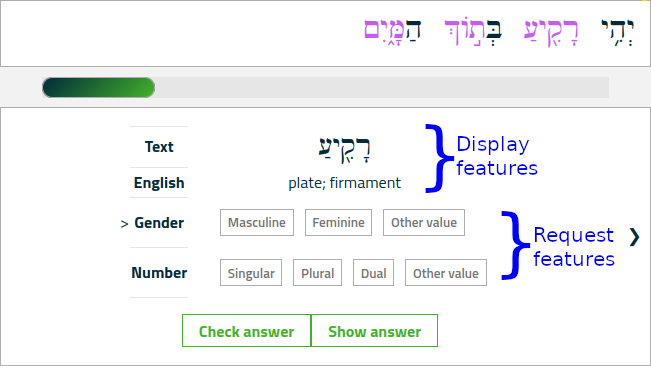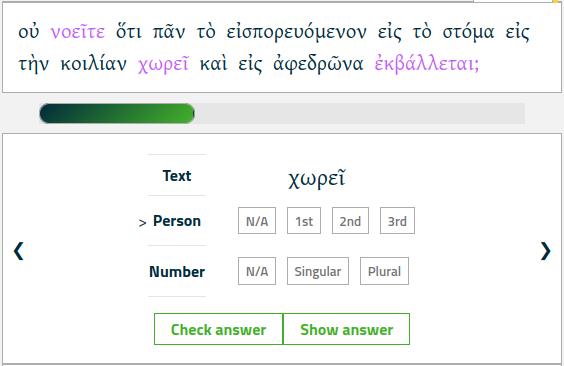Help pages
Terminology
Example: First Hebrew exercise
Example: Second Hebrew exercise
Example: Third Hebrew exercise
Example: Second Greek exercise
Example: Create a simple Hebrew exercise
Example: Create an advanced Hebrew exercise
Example: Create a simple Greek exercise
Andrews University Final Exam: Hebrew I (OTST551)
Andrews University Final Exam: Hebrew II (OTST552)
Andrews University Final Exam: Advanced Hebrew (OTST625)
Andrews University Hebrew Placement Exam
Hebrew Proficiency Exam for OTST Exegesis classes
Andrews University Final Exam: Intermediate Greek (NTST552)
Andrews University Greek Placement Exam
Terminology
Below you will find an alphabetical list of some of the terms used in connection with Bible Online Learner.
Display Feature and Request Feature
When running an exercise, the Bible OL will display a list of features for each question object. The “display features” on the list give information about the question object; the “request features” have values that the student should provide:
Feature
A sentence unit has various features. A feature has a name and a value. For example, a word can have a feature called part of speech with the value noun and a feature called gender with the value masculine. An important feature is called text, which simply refers to the actual characters making up the word; for example, the very first word of the Greek New Testament has a text feature with the value “Βίβλος”.
Question Object
When an exercise is being run, the system selects certain sentence units (typically words) and asks the student about them. These selected sentence units are the “question objects”. For example, in the following illustration, there are three question objects, namely νοεῖτε, χωρεῖ, and ἐκβάλλεται. The question objects are written in purple letters, and students move between them by clicking the ❮ and ❯ symbols.
Request Feature
See Display Feature and Request Feature
Sentence Unit
A sentence unit is a part of a sentence. Thus a sentence unit can be a word, a clause, a phrase, or perhaps something else. A Bible OL exercise asks questions about specific sentence units. By far the most common sentence unit in exercises is a word.

